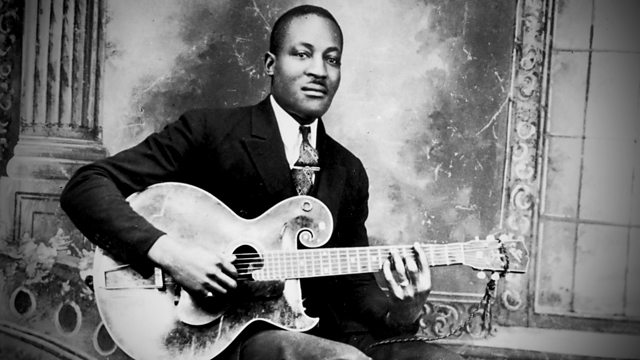Introduction
Big Bill Broonzy was a pivotal figure in the development of American blues music, known for his distinctive guitar playing, powerful voice, and prolific songwriting. His career spanned from the 1920s to the 1950s, during which he transitioned from rural acoustic blues to urban electric blues, influencing countless musicians and shaping the blues genre.
Early Life and Career Beginnings
Early Life Big Bill Broonzy was born Lee Conley Bradley on June 26, 1893, or 1903, in either Scott, Mississippi, or Lake Dick, Arkansas (sources vary). He was one of 17 children in a farming family, and his early life was steeped in the African American traditions of spirituals, work songs, and folk music.
Career Beginnings After serving in World War I, Broonzy moved to Chicago in the 1920s. He initially worked various jobs while honing his musical skills. His first recording session was in 1927, marking the start of a prolific recording career.
Musical Style and Evolution
Acoustic Blues In his early career, Broonzy’s music was characterized by a rural acoustic blues style, heavily influenced by the Mississippi Delta tradition. Songs like “All By Myself” and “House Rent Stomp” highlight his adept fingerpicking and rich, expressive vocals.
Transition to Electric Blues As the blues evolved in the 1940s, Broonzy adapted to the changing musical landscape by incorporating electric guitar and moving towards a more urban sound. This transition is evident in songs like “Key to the Highway” and “Sweet Honey Bee.”
Folk and European Influence In the 1950s, Broonzy’s career took another turn as he became involved in the American folk music revival. He toured extensively in Europe, where he found a receptive audience. His performances often included traditional folk songs, spirituals, and blues, showcasing his versatility.
Major Albums and Hits
- “Good Time Tonight” (1938): An early hit that exemplifies his acoustic blues style.
- “Key to the Highway” (1940): One of his most famous songs, covered by numerous artists.
- “Trouble in Mind” (1952): A song that highlights his transition to electric blues.
- “Big Bill’s Blues” (1955): A comprehensive collection of his work, showcasing his impact on the genre.
- “The Young Big Bill Broonzy 1928-1935” (1991): A posthumous compilation that provides insight into his early recordings.
Big Bill Broonzy- Get Back Vol. 1 – Playlist:
Big Bill Broonzy, Vol. 2 Playlist:
Big Bill Broonzy – Topic YouTube Channel:


Leave a Reply